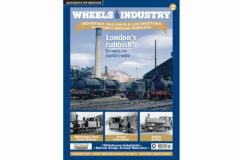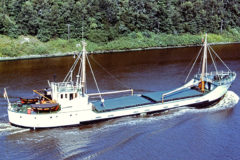The classic freighters era
Posted by Chris Graham on 23rd May 2020
Ships Monthly magazine takes a nostalgic look back at the classic freighters era, and some of the ships that dominated international trade during the decades immediately after WW2.
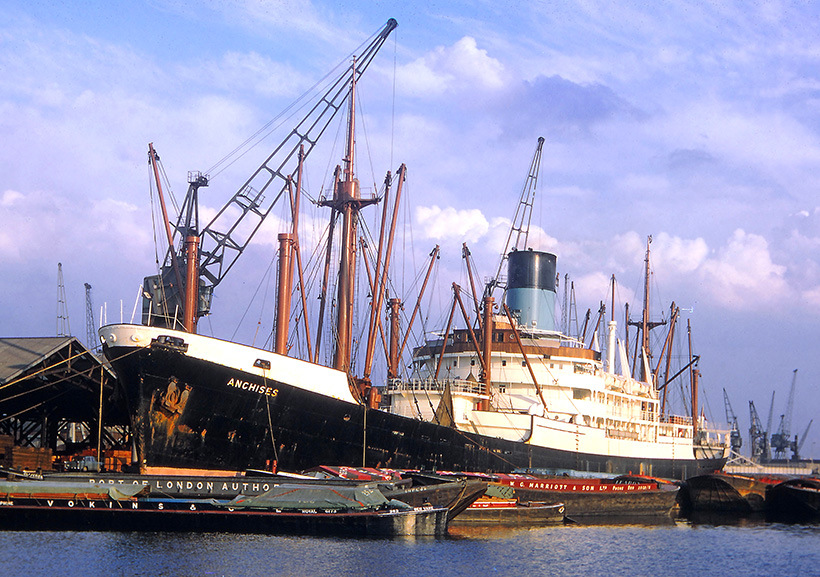
The classic freighters era: Blue Funnel’s Anchises (1947/7,643gt) is seen here berthed in one of London’s docks, sometime during April, 1968. Built in Dundee by Robb Caledon, the Anchises was re-named Alcinous in 1973, before arriving in Kaosiung for breaking, in 1975.
Back in the classic freighters era, multiple examples of these industrious ships could be spotted all around the UK, but particularly in the major ports of London, Liverpool and Glasgow. Such vessels reached their zenith during the in the years following the Second World War, before containerisation arrived to revolutionise the transportation of freight around the world. The Royal Docks in London had as many as 40 freighters a day at times during the 1950s and ‘60s, which would have been on worldwide cargo services, carrying products such as wool, hides, fruit, meat and timber for the home market.
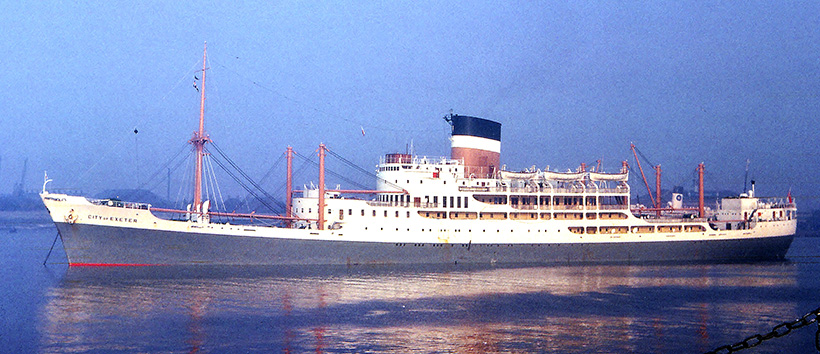
Ellerman Lines’ City of Exeter was built by Vickers Armstrong in 1953, and had a gross tonnage of 13,692. Built for the London-to-South Africa route, there was accommodation for 107 first class passengers. Sold and converted in 1972 to become a roll-on, roll-off ferry, she was re-named Mediterranean Sky on completion. City of Exeter was beached at Aliaga in July, 1998.
The freighters usually had accommodation for up to 12 passengers and, before the jet age, for many passage on these ships represented the only way to reach destinations in South America, Africa and the Middle and Far East. Ellerman Lines, for instance, had a fleet of more than 70 ships during the 1960s, Blue Funnel operated over 50 and Blue Star Line had over 40. What’s more, these three are just a handful of the many, well-known British companies operating at that time.
Loading and discharging was often slow away from home ports, with the ships’ derricks working both sides, loading cargo into barges at an anchorage, or on to a small jetty. Loading meat on the Australian coast during the height of the summer could only start after dark, as the hatches were sealed during the day to ensure refrigerated temperatures were maintained.
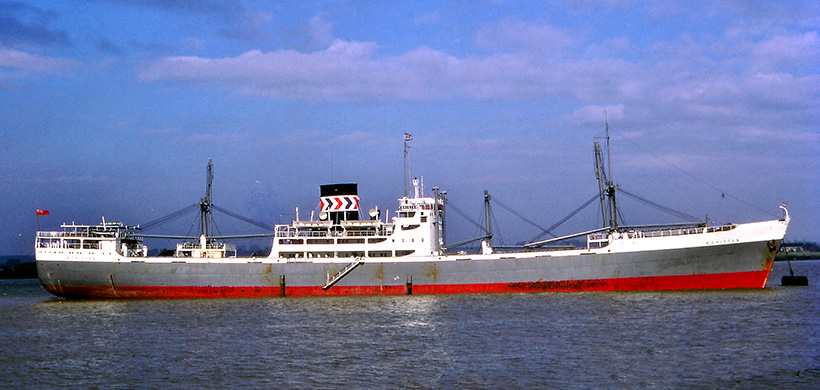
Strick Line vessels were easily recognised by the red and blue chevrons on their funnels. Kohistan was built by Readheads, of South Shields, in 1960, with a gross tonnage of 9,665. The company traded for many years to the Persian Gulf ports and, later, to the Indian sub-continent. Kohistan was renamed Strathaslak within the P&O fleet during 1975 and, finally, Quincy by Greek owners in 1978. She arrived at Gadani Beach for breaking in 1983.
Cargo was loaded at four or five ports along the coast, and it could be up to five weeks before ships left Australian waters, giving young crew members a way to see the world. British ships were traditionally built in British yards, with companies often giving repeat orders to their preferred builders, such as William Doxford, Armstrong Whitworth, Swan Hunter and Bartram & Sons.
The best-run companies would always take pride in the appearance of their ships, and kept them well maintained so that, when they appeared on sales lists, they were often snapped-up by Greek owners for further service. A well-built and properly-maintained British ship would give service for at least three years with little or no further maintenance and, by limiting the number of crew, the ships became much more profitable to operate.
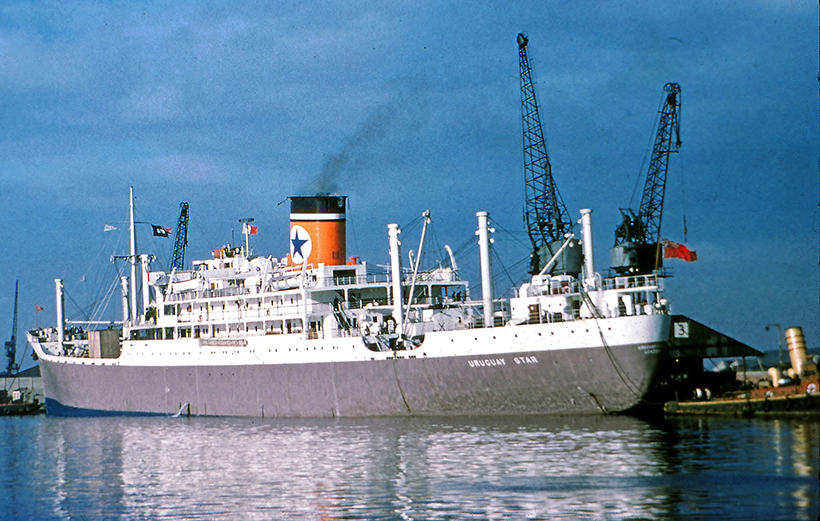
Blue Star Lines’ Uruguay Star is seen here in Union Castle Line hull colours, in one of London’s Royal Docks. An easily-recognisable Gaselee tug (with yellow funnel and three red bands) is moored astern. Completed by Cammell Laird in 1948, with a gross tonnage of 10,723, she arrived at Kaohsiung for breaking, in August, 1972.
But with air travel reducing flight times from the 1960s onwards, and containerisation taking over cargo trades in the 1970s, the great freighters disappeared from European waters. They were then only to be found working in the Middle and Far East, where they traded for many years, often under British ownership. So it is now that, rather sadly, the era of the great freighter is long gone.
To subscribe to Ships Monthly magazine, simply click here



